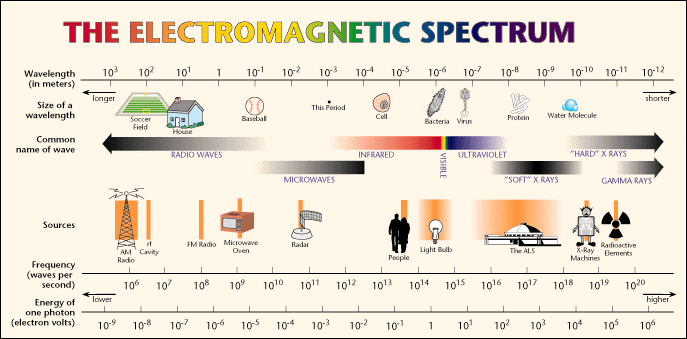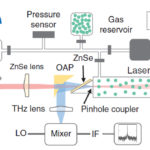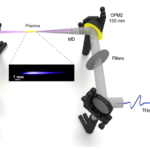The terahertz part of the electromagnetic spectrum between millimeter waves and optical range remains a largely untapped, difficult-to-use resource; researchers are investigating different techniques for efficiently generating terahertz waves to promote the use of this part of the spectrum.
Electromagnetic energy in the terahertz (THz) region of the spectrum, nominally 300 GHz/0.3 THz to 10 THz (although some consider it to start at 100 GHz/0.1 THz) presents a technical dilemma. [100 GHz is a wavelength of 0.003 meters/3 mm; 10 THz corresponds to 0.03 mm.] It’s at the upper end and beyond the millimeter-wave part of the RF spectrum as well.
On the one hand, the enormous width of this span means it has the potential to support extremely high data rates as well as some fascinating sensing and scanning instrumentation. On the other hand, terahertz waves exist in a sort of “EM desert.” They lie between the RF spectrum at multiple tens of gigahertz (GHz) – which can be managed with leading-edge solid-state and vacuum-tube devices supported by specialized coaxial cables and waveguides – and the optical world with its many lasers, LEDs, and photodetectors (Figure 1).

In short: generating terahertz waves is hard (and sensing them is almost as hard, but not entirely). Electromagnetic radiation below the terahertz band can be created by many sources and emitted by antennas. In contrast, the optical radiation above the terahertz band can be developed by LEDs, incandescent lamps, and various solid-state lasers, to cite a few possibilities.
Still, the lure of the THz spectrum and its potential is spurring many academic-research efforts in this area, supported by research grants, of course. Why pursue creating terahertz waves? There are multiple reasons:
- their ability to scan and “see-through” solid surfaces is very intriguing.
- their huge available bandwidth means data rates in the tens of Gbits/sec are theoretically achievable.
- it’s a largely unlicensed and regulated part of the spectrum, so there are few restrictions.
- it’s in the nature of research to look to explore the unexplored and perhaps figure out how to exploit it technically.
- The THz spectrum may be needed for 6G, 7G, or 8G links – no one can say.
- there’s a significant amount of research grants available from sources ranging from mil/aero/defense sponsors(government and private) to RF/microwave vendors who are looking ahead.
- it blends laser, optics, conventional RF, electronics, and other disciplines, and so is a good fit for university cross-departmental efforts which provide projects and invoke multiple disciplines for advanced-level students and teams.
- because they are in that odd “gap” space in the electromagnetic spectrum, and this presents a challenge!
These efforts use advanced technologies in creative and non-obvious ways to achieve various levels of advances and success in generating terahertz waves, as measured by frequency (wavelength), bandwidth, tunability within the terahertz spectrum, and output power. Keep in mind that nothing is the THz world is obvious or easy, and generating and measuring these waves requires sophistication, advanced physics and optics principles, complicated lab set-ups, and more.
In the next three parts, we’ll look at three very different projects which focus on the generation of terahertz waves, to get a sense of the complexity of efforts underway to develop creative approaches in this still wide-open electromagnetic frontier.
Terahertz Perspectives
IEEE Spectrum, “Wireless Industry’s Newest Gambit: Terahertz Communication Bands”
IEEE Spectrum, “Terahertz Waves Could Push 5G to 6G”
IEEE Spectrum, “The Truth About Terahertz”
EE World Online References
Terahertz Laser Pulses Amplify Optical Phonons in Solids
Terahertz Technology Creates New Insight Into How Semiconductor Lasers Work
Scientists Fine-Tune Carbon Nanotubes For Flexible, Fingertip-Wearable Terahertz Imagers
The Future Of Wireless Communications Is Terahertz
Bridging The Terahertz Gap
Inspecting Matter Using Terahertz Light
Graphene And Terahertz Waves Could Lead The Way To Future Communication
Wave of the Future: Terahertz Chips a New Way of Seeing Through Matter
Terahertz Wireless Could Make Spaceborne Satellite Links as Fast as Fiber-Optic Links
NUS Engineers Develop Low-Cost, Flexible Terahertz Radiation Source for Fast, Non-Invasive Screening
Researchers Whip Up Terahertz Radiation at Room Temperature
Light-powered 3-D Printer Creates Terahertz Lens



